This CE Center article is no longer eligible for receiving credits.
Legionella bacteria is a harmful pathogen which, if inhaled, can lead to a very severe form of pneumonia known as Legionnaire’s Disease (LD). The legionella bacteria grows in water with moderate temperatures, which means any building with water systems is a potential breeding ground for the bacteria and an outbreak of LD. After years of research and development, the Centers for Disease Control (CDC) and the American Society of Heating, Refrigeration, and Air-Conditioning Engineers (ASHRAE) have developed protocols and standards to help avoid outbreaks using proper water management. That management requires that design professionals work with facility owners and create a specific water management plan for the facility. The successful implementation of that plan requires some specific water treatment solutions for reducing or eliminating the risk of an outbreak. There are a number of choices that can be made in this regard, and this course will review some of the main solutions available along with some of the pros and cons of each.
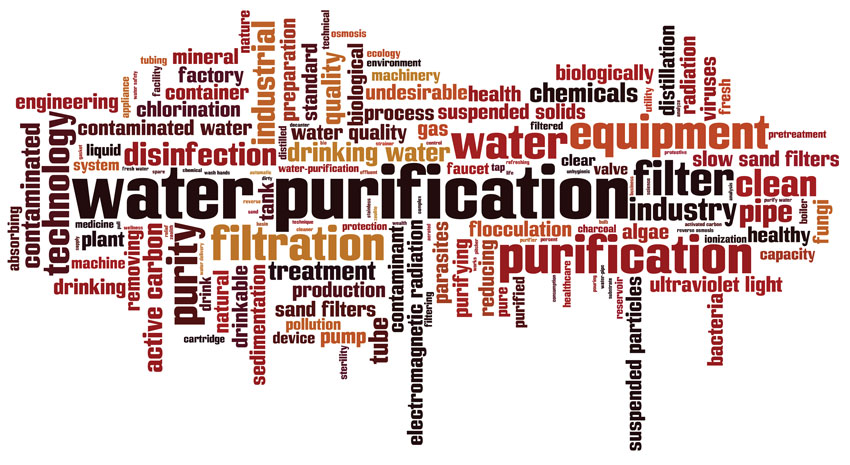
All images courtesy of Watts Water Technologies
Legionella Overview
Outbreaks of legionella bacteria can cause LD in any setting but is a particular concern in health-care facilities (hospitals, nursing homes, long-term care) and hospitality buildings (hotels, motels, resorts). The presence of the bacteria can be widespread since it can grow in any part of a water system in a building that is continually wet, such as tanks, piping, fixtures, or water features. In order to infect a person, the legionella bacteria needs to be part of water droplets that become airborne in a manner of aerosol generation. If that infected moisture reaches a person’s nose or mouth where it is inhaled and settles in the lungs, then it can sicken the person with LD. Since transmission of the bacteria in the water systems to humans requires it to become airborne, it can occur from things like showerheads, cooling towers, bubbling hot tubs, HVAC units, and decorative fountains. However, the legionella bacteria can form and grow before it ever gets to those places, which is why LD outbreaks are generally linked to water in large or complex water systems, including those found in health-care facilities and hospitality settings.
When considering the impact of legionella, the CDC has been determined that LD is primarily a health risk for persons who are at least 50 years old, smokers, and those with underlying medical conditions, such as chronic lung disease or immunosuppression. Nonetheless, the disease can, in reality, affect anyone. According to the Mayo clinic and some other sources, many people exposed to legionella bacteria don’t develop symptoms, but those who do may experience cough, fever, chills, shortness of breath, muscle aches, headaches, and diarrhea. In severe cases, it has also caused death. Treatment typically requires antibiotics, hospitalization, or other care. The CDC has been tracking the number of people who have been diagnosed with LD and have recorded anywhere between 8,000–18,000 cases annually since the year 2000. While the number of cases is disconcerting, even more so is the trend of growth in the number of outbreaks and infections. The CDC reports that in the United States from 2000–2009, the number of infections increased by a dramatic 217 percent. However, over the time span measured from 2000–2014, the increase has been an even more staggering 400 percent. Clearly this is a serious health concern, and one that comes with a significant price tag. The CDC tells us that the number of direct health-care dollars it costs in the United States to treat a single case of Legionnaire’s disease is $34,000.
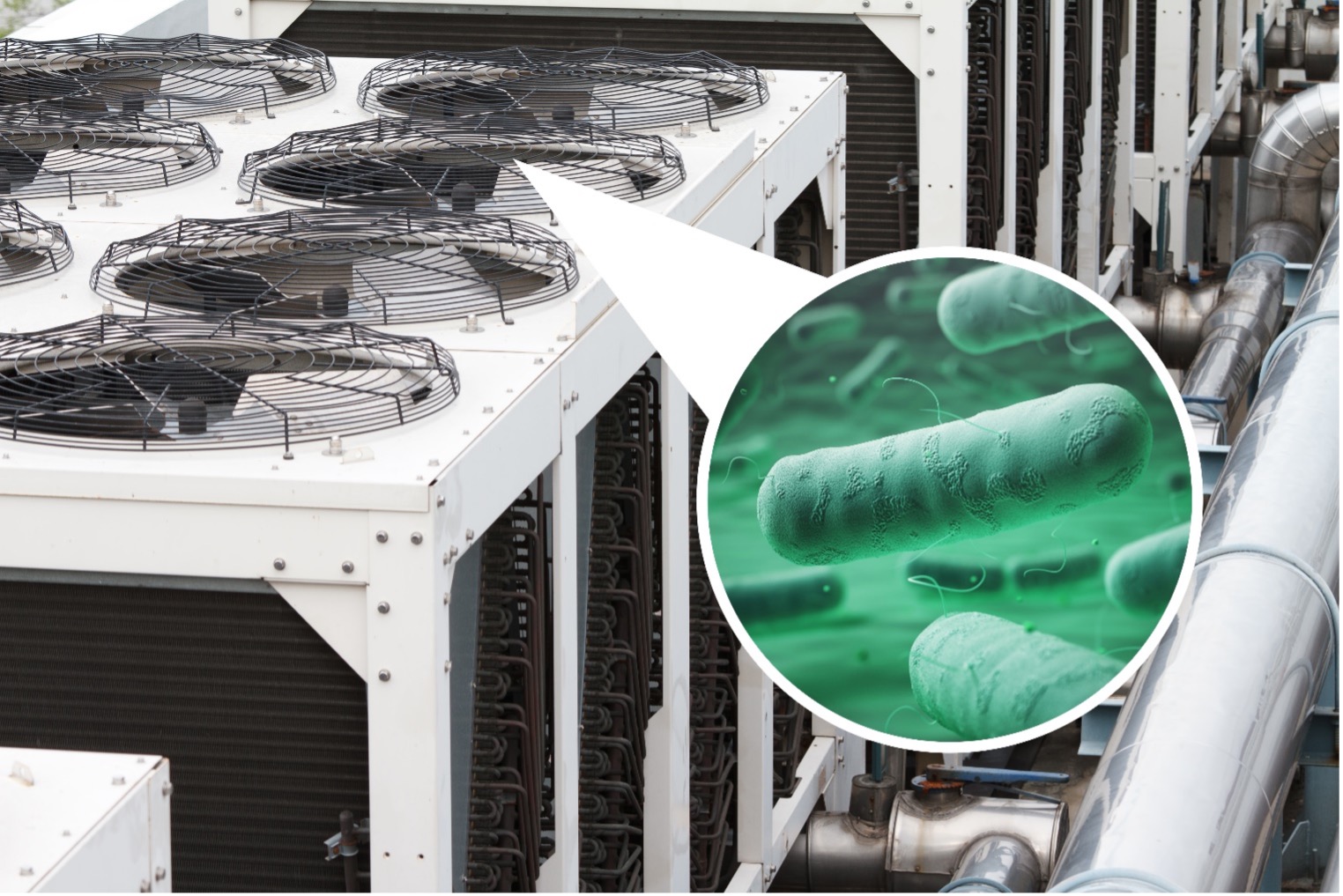
Legionella bacteria is transferred to people through air-borne moisture from plumbing fixtures or air-handling systems.
Legionella Control
Due to the seriousness of the disease and the linkage to water systems in buildings, ASHRAE has been at the forefront of investigating an effective means of controlling the conditions that will reduce LD outbreaks. Following some initial work in the early 2000s, it published in 2015 an updated ANSI/ASHRAE Standard 188: Legionellosis: Risk Management for Building Water Systems. This document has become the accepted standard for a comprehensive water management plan for buildings where legionella control is sought. Specifically, it has been recognized by the CDC and The Department of Health & Human Services (DHHS) Centers for Medicare and Medicaid Services (CMS) as the basis for programs that they administer. In fact, federal funding for many health-care facilities, particularly those that receive Medicare or Medicaid for payment, must show compliance with an ASHRAE 188 Water Management Program (WMP) or risk losing payments.
A full WMP under ASHRAE 188/Guideline 188 is based on a seven-step process that includes defining a full program team, survey/documentation of water systems, analysis of water systems, determination of control measures, monitoring, confirmation, and documentation. To be effective, the WMP needs to be ongoing and continuous, not just a one-time exercise. As such, it can be integrated into other building operations policies and procedures, but it must be able to stand on its own as a complete plan. The whole process requires confirmation and appropriate documentation that the water management program is being carried out and all activity is recorded and documented.
The ASHRAE 188/ASHRAE Guideline 12 standard is proving to be an effective resource for building operations teams that need real guidance on reducing the risk of LD outbreaks. As a standard, however, it is focused on the process of creating, implementing, and carrying out a full water management program. It does not provide specific solutions for addressing water systems or offer any design components. Rather, design professionals (engineers, architects, etc.) are required to provide expertise on identifying and analyzing all aspects of the water systems. Then they need to recommend specific control measure solutions appropriate to the particular building and water system at hand. For full effectiveness, those same design professionals should be involved with ongoing aspects of the WMP.
Part of the plan requires ongoing monitoring and water testing for legionella bacteria and the means to address how it may or may not be transported within a water system. If monitoring reveals a concern, then corrective action must be taken promptly to eliminate it from the system. That means a series of corrective measures must be in place ahead of time to solve the problem immediately. It also means that the normal day-to-day operation needs to allow for ongoing preventative treatments to occur as part of standard operating procedures. That is where attention to all of the plumbing components and choices about their application comes into play, often requiring specialized knowledge of things like expansion/storage water tanks, water treatment systems, mixing valves, drains, backflow valves, etc.
Follow the Water
A facility should consider implementing a multi-barrier approach from POE to POU for legionella risk mitigation. Throughout the premise plumbing system there are multiple locations and scenarios that should be considered. Let’s take a look at how water travels through the system, where risk rises and solutions that can be implemented to reduce risk. We will take a closer look at each solution but here is a quick overview of the path and considerations at each point.
Water Utility
Most municipalities inject a disinfectant in the water supply. Most commonly, chlorine. Yes, that can help mitigate the risk of legionella but there are several reasons a facility shouldn't rely on it to mitigate their risk. Disinfectants and chemicals dissipate as they travel. One can assume that water will travel numerous miles before entering a building so dissipation has occurred and the disinfectant entering the building probably isn't at a level required to mitigate the risk of legionella. The amount of time and length of travel water experiences on the way to a building can also increase the water’s age. As water increases the proliferation of bacteria growth can also increase. The disinfectant from the municipality will continue to dissipate as it travels through a building's premise plumbing system causing the effectiveness to decrease even more. Municipalities experience interruptions, often unplanned and unexpected. This can affect the quality of the water entering your building. Municipalities can often schedule an interruption or change in the disinfectant which will affect the water and they may or may not make the change known.
Maintenance Room
- There are numerous choices a facilities team has to mitigate the risk of legionella in the maintenance room. When choosing equipment necessary for the building’s function the team should consider if the equipment may have a positive or negative effect on legionella growth. The main methods used are temperature, UV, chemical dosing, copper silver and ultra filtration.
- Industry agrees that controlling temperature of the water can greatly decrease legionella in a building’s water system. The most accurate way to control the water’s temperature is through a digital mixing system.
- UV can be used in the water and minimizes legionella by rapidly disrupting bacteria DNA. It stops the ability for Legionella to multiply and grow.
- The facilities team can choose to inject chemicals. This would be in addition to any disinfectants the local municipality may have added. The most common chemicals utilized are chlorine, chloramines and chlorine dioxide.
- Copper silver effectively kills legionella by the bonding of positively charged ions with the negatively charged cell wall.
- Filters are often used to remove sediment and bacteria from the water supply. Ultra filtration that are .2 micron or smaller can be used to filter legionella.
- Scale reduction should be considered. Reducing scale does not directly reduce legionella but it can play a role in reducing the biofilm that is a food source and a hiding place for bacteria.
- All solutions could be considered because each have pros and cons. What might be the most effective in one building might not be as effective in a different building. A multi-barrier approach utilizing multiple solutions should be implemented for the most effective water management plan for legionella reduction.
Premise Plumbing
Once water travels through the maintenance room solutions it enters the piping of the premise plumbing system. Several piping attributes and conditions can affect the growth of legionella and should be considered.
- If your building is older then the age of the piping should be a consideration in your water management plan. As pipes age you may see corrosion, pinhole leaks, biofilm and scale buildup. All can increase or effect legionella growth.
- Consider the piping material. In general, smooth piping doesn’t harbor as much biofilm as rougher, more porous material. Researchers have studied biofilm growth on different types of materials, with variables that also include factors such as water flow and temperature. In one study, the following was found CPVC and stainless steel harbor the least bacteria.
- Another facet is making sure that the pipe is sized correctly. Don’t oversize! Oversized pipe not only affects flow (slowing it down and reducing helpful turbulence within the waterways), but also increases the surface area for germ-harboring biofilm growth.
- Dead legs should be avoided when possible In existing buildings there isn’t much that can be done about already-present piping dead legs; these low-flow/no-flow areas provide safe harbor/refuge areas for legionella and other pathogens. So, if there are dead legs within a building’s piped infrastructure, solutions must be considered.
- Another facet is making sure that the pipe is sized correctly. Don’t oversize! Oversized pipe not only affects flow (slowing it down and reducing helpful turbulence within the waterways), but also increases the surface area for water stagnation and germ-harboring biofilm growth.
The last line of defense is at POU. Considerations include:
- Hospitals should consider point of use filters as a final barrier in patient rooms and other risk areas Cost may inhibit some facilities from installing filters at all outlets but should consider utilizing them all the time in the high-risk areas and implement them immediately during an outbreak.
- Sensor faucets have been shown to inhibit water flow which can increase the risk of legionella growth so if you have or are considering sensor faucets you should review the pros and cons.
- Other items to consider is letting shower hoses hang down in between uses and flushing outlets between uses.
At the very end of the system, but first of mind is the patient. The patient should be front and center in the decision-making processes related to legionella risk mitigation. Remember that approximately one in ten who contract Legionnaires’ will die. Survivors will also endure long term effects.
In light of everything discussed above, the means to treat water on an ongoing basis as well as in the case of a corrective measure for a discovered presence of legionella deserves some special attention.
Toward that end, we will review in the following sections four primary types of water treatment solutions, also mentioning some others, which can be considered in a water system design and as part of a full water management program.

The key to a successful water management program under ASHRAE 188 is the formation of a dedicated team of the right people to be involved in carrying it out.
Legionella bacteria is a harmful pathogen which, if inhaled, can lead to a very severe form of pneumonia known as Legionnaire’s Disease (LD). The legionella bacteria grows in water with moderate temperatures, which means any building with water systems is a potential breeding ground for the bacteria and an outbreak of LD. After years of research and development, the Centers for Disease Control (CDC) and the American Society of Heating, Refrigeration, and Air-Conditioning Engineers (ASHRAE) have developed protocols and standards to help avoid outbreaks using proper water management. That management requires that design professionals work with facility owners and create a specific water management plan for the facility. The successful implementation of that plan requires some specific water treatment solutions for reducing or eliminating the risk of an outbreak. There are a number of choices that can be made in this regard, and this course will review some of the main solutions available along with some of the pros and cons of each.

All images courtesy of Watts Water Technologies
Legionella Overview
Outbreaks of legionella bacteria can cause LD in any setting but is a particular concern in health-care facilities (hospitals, nursing homes, long-term care) and hospitality buildings (hotels, motels, resorts). The presence of the bacteria can be widespread since it can grow in any part of a water system in a building that is continually wet, such as tanks, piping, fixtures, or water features. In order to infect a person, the legionella bacteria needs to be part of water droplets that become airborne in a manner of aerosol generation. If that infected moisture reaches a person’s nose or mouth where it is inhaled and settles in the lungs, then it can sicken the person with LD. Since transmission of the bacteria in the water systems to humans requires it to become airborne, it can occur from things like showerheads, cooling towers, bubbling hot tubs, HVAC units, and decorative fountains. However, the legionella bacteria can form and grow before it ever gets to those places, which is why LD outbreaks are generally linked to water in large or complex water systems, including those found in health-care facilities and hospitality settings.
When considering the impact of legionella, the CDC has been determined that LD is primarily a health risk for persons who are at least 50 years old, smokers, and those with underlying medical conditions, such as chronic lung disease or immunosuppression. Nonetheless, the disease can, in reality, affect anyone. According to the Mayo clinic and some other sources, many people exposed to legionella bacteria don’t develop symptoms, but those who do may experience cough, fever, chills, shortness of breath, muscle aches, headaches, and diarrhea. In severe cases, it has also caused death. Treatment typically requires antibiotics, hospitalization, or other care. The CDC has been tracking the number of people who have been diagnosed with LD and have recorded anywhere between 8,000–18,000 cases annually since the year 2000. While the number of cases is disconcerting, even more so is the trend of growth in the number of outbreaks and infections. The CDC reports that in the United States from 2000–2009, the number of infections increased by a dramatic 217 percent. However, over the time span measured from 2000–2014, the increase has been an even more staggering 400 percent. Clearly this is a serious health concern, and one that comes with a significant price tag. The CDC tells us that the number of direct health-care dollars it costs in the United States to treat a single case of Legionnaire’s disease is $34,000.

Legionella bacteria is transferred to people through air-borne moisture from plumbing fixtures or air-handling systems.
Legionella Control
Due to the seriousness of the disease and the linkage to water systems in buildings, ASHRAE has been at the forefront of investigating an effective means of controlling the conditions that will reduce LD outbreaks. Following some initial work in the early 2000s, it published in 2015 an updated ANSI/ASHRAE Standard 188: Legionellosis: Risk Management for Building Water Systems. This document has become the accepted standard for a comprehensive water management plan for buildings where legionella control is sought. Specifically, it has been recognized by the CDC and The Department of Health & Human Services (DHHS) Centers for Medicare and Medicaid Services (CMS) as the basis for programs that they administer. In fact, federal funding for many health-care facilities, particularly those that receive Medicare or Medicaid for payment, must show compliance with an ASHRAE 188 Water Management Program (WMP) or risk losing payments.
A full WMP under ASHRAE 188/Guideline 188 is based on a seven-step process that includes defining a full program team, survey/documentation of water systems, analysis of water systems, determination of control measures, monitoring, confirmation, and documentation. To be effective, the WMP needs to be ongoing and continuous, not just a one-time exercise. As such, it can be integrated into other building operations policies and procedures, but it must be able to stand on its own as a complete plan. The whole process requires confirmation and appropriate documentation that the water management program is being carried out and all activity is recorded and documented.
The ASHRAE 188/ASHRAE Guideline 12 standard is proving to be an effective resource for building operations teams that need real guidance on reducing the risk of LD outbreaks. As a standard, however, it is focused on the process of creating, implementing, and carrying out a full water management program. It does not provide specific solutions for addressing water systems or offer any design components. Rather, design professionals (engineers, architects, etc.) are required to provide expertise on identifying and analyzing all aspects of the water systems. Then they need to recommend specific control measure solutions appropriate to the particular building and water system at hand. For full effectiveness, those same design professionals should be involved with ongoing aspects of the WMP.
Part of the plan requires ongoing monitoring and water testing for legionella bacteria and the means to address how it may or may not be transported within a water system. If monitoring reveals a concern, then corrective action must be taken promptly to eliminate it from the system. That means a series of corrective measures must be in place ahead of time to solve the problem immediately. It also means that the normal day-to-day operation needs to allow for ongoing preventative treatments to occur as part of standard operating procedures. That is where attention to all of the plumbing components and choices about their application comes into play, often requiring specialized knowledge of things like expansion/storage water tanks, water treatment systems, mixing valves, drains, backflow valves, etc.
Follow the Water
A facility should consider implementing a multi-barrier approach from POE to POU for legionella risk mitigation. Throughout the premise plumbing system there are multiple locations and scenarios that should be considered. Let’s take a look at how water travels through the system, where risk rises and solutions that can be implemented to reduce risk. We will take a closer look at each solution but here is a quick overview of the path and considerations at each point.
Water Utility
Most municipalities inject a disinfectant in the water supply. Most commonly, chlorine. Yes, that can help mitigate the risk of legionella but there are several reasons a facility shouldn't rely on it to mitigate their risk. Disinfectants and chemicals dissipate as they travel. One can assume that water will travel numerous miles before entering a building so dissipation has occurred and the disinfectant entering the building probably isn't at a level required to mitigate the risk of legionella. The amount of time and length of travel water experiences on the way to a building can also increase the water’s age. As water increases the proliferation of bacteria growth can also increase. The disinfectant from the municipality will continue to dissipate as it travels through a building's premise plumbing system causing the effectiveness to decrease even more. Municipalities experience interruptions, often unplanned and unexpected. This can affect the quality of the water entering your building. Municipalities can often schedule an interruption or change in the disinfectant which will affect the water and they may or may not make the change known.
Maintenance Room
- There are numerous choices a facilities team has to mitigate the risk of legionella in the maintenance room. When choosing equipment necessary for the building’s function the team should consider if the equipment may have a positive or negative effect on legionella growth. The main methods used are temperature, UV, chemical dosing, copper silver and ultra filtration.
- Industry agrees that controlling temperature of the water can greatly decrease legionella in a building’s water system. The most accurate way to control the water’s temperature is through a digital mixing system.
- UV can be used in the water and minimizes legionella by rapidly disrupting bacteria DNA. It stops the ability for Legionella to multiply and grow.
- The facilities team can choose to inject chemicals. This would be in addition to any disinfectants the local municipality may have added. The most common chemicals utilized are chlorine, chloramines and chlorine dioxide.
- Copper silver effectively kills legionella by the bonding of positively charged ions with the negatively charged cell wall.
- Filters are often used to remove sediment and bacteria from the water supply. Ultra filtration that are .2 micron or smaller can be used to filter legionella.
- Scale reduction should be considered. Reducing scale does not directly reduce legionella but it can play a role in reducing the biofilm that is a food source and a hiding place for bacteria.
- All solutions could be considered because each have pros and cons. What might be the most effective in one building might not be as effective in a different building. A multi-barrier approach utilizing multiple solutions should be implemented for the most effective water management plan for legionella reduction.
Premise Plumbing
Once water travels through the maintenance room solutions it enters the piping of the premise plumbing system. Several piping attributes and conditions can affect the growth of legionella and should be considered.
- If your building is older then the age of the piping should be a consideration in your water management plan. As pipes age you may see corrosion, pinhole leaks, biofilm and scale buildup. All can increase or effect legionella growth.
- Consider the piping material. In general, smooth piping doesn’t harbor as much biofilm as rougher, more porous material. Researchers have studied biofilm growth on different types of materials, with variables that also include factors such as water flow and temperature. In one study, the following was found CPVC and stainless steel harbor the least bacteria.
- Another facet is making sure that the pipe is sized correctly. Don’t oversize! Oversized pipe not only affects flow (slowing it down and reducing helpful turbulence within the waterways), but also increases the surface area for germ-harboring biofilm growth.
- Dead legs should be avoided when possible In existing buildings there isn’t much that can be done about already-present piping dead legs; these low-flow/no-flow areas provide safe harbor/refuge areas for legionella and other pathogens. So, if there are dead legs within a building’s piped infrastructure, solutions must be considered.
- Another facet is making sure that the pipe is sized correctly. Don’t oversize! Oversized pipe not only affects flow (slowing it down and reducing helpful turbulence within the waterways), but also increases the surface area for water stagnation and germ-harboring biofilm growth.
The last line of defense is at POU. Considerations include:
- Hospitals should consider point of use filters as a final barrier in patient rooms and other risk areas Cost may inhibit some facilities from installing filters at all outlets but should consider utilizing them all the time in the high-risk areas and implement them immediately during an outbreak.
- Sensor faucets have been shown to inhibit water flow which can increase the risk of legionella growth so if you have or are considering sensor faucets you should review the pros and cons.
- Other items to consider is letting shower hoses hang down in between uses and flushing outlets between uses.
At the very end of the system, but first of mind is the patient. The patient should be front and center in the decision-making processes related to legionella risk mitigation. Remember that approximately one in ten who contract Legionnaires’ will die. Survivors will also endure long term effects.
In light of everything discussed above, the means to treat water on an ongoing basis as well as in the case of a corrective measure for a discovered presence of legionella deserves some special attention.
Toward that end, we will review in the following sections four primary types of water treatment solutions, also mentioning some others, which can be considered in a water system design and as part of a full water management program.

The key to a successful water management program under ASHRAE 188 is the formation of a dedicated team of the right people to be involved in carrying it out.
Solution 1: Heating of Water
Facilities that provide hot water throughout the building can consider this solution as part of their overall WMP. It can be very effective because legionella bacteria are very sensitive to heat. The normal temperature range for legionella bacteria to grow is between 68–122 degrees Fahrenheit. At temperatures below 68 degrees Fahrenheit, it becomes dormant, and at elevated temperatures, it will die. Part of the concern is that the ideal growth range is between 95–115 degrees Fahrenheit, which is the typical operating temperature of many hot water heating systems. Hence, a WMP that seeks to use heat as a treatment solution needs to have the capability to do so but without the fear of scalding and compromising the safety of people in the building.
The premise of a heat solution is that legionella die within 5–6 hours in water heated above 131 degrees Fahrenheit, and more rapidly at higher temperatures. Once the potential sources of water contamination are identified (i.e., storage tanks or other components), then the temperatures there need to be aligned to assure bacteria does not grow. The most straightforward approach here is for the daily water temperature in a system to be kept above 131 degrees Fahrenheit to kill any bacteria. ASHRAE 188 recommends 140 degrees Fahrenheit as the baseline temperature in this case to kill the bacteria within 30 minutes. In the case of a discovered contamination of the water, the temperature can be raised briefly to around 160 degrees Fahrenheit for a high-temperature flush of the system. This will rapidly kill all of the bacteria in the heated water system and eliminate the threat of a pending outbreak.
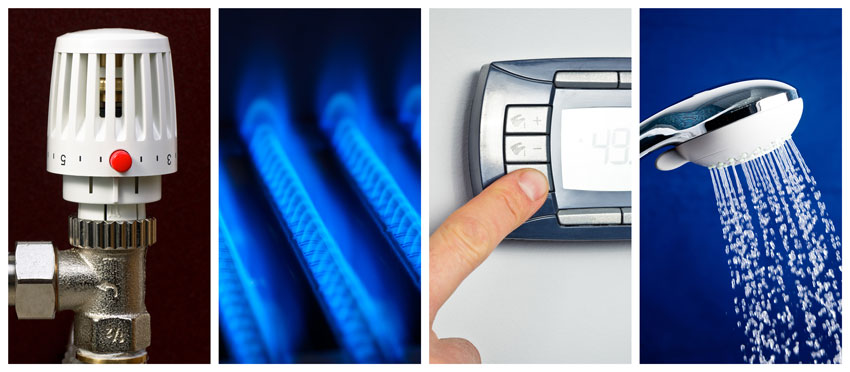
Heating water to a designated temperature can keep legionella bacteria from spreading or rapidly kill it off in the event of an outbreak.
One of the design considerations of a heating solution is the layout of the piping. If water is being circulated throughout the system and heated at a central source, then there needs to be some certainty that all of the water is actually making it to that heat source so it can be appropriately heated. Remote portions of the piping, sometimes referred to as dead legs, may create pockets of water that does not fully circulate. That means any water that may sit there for some time is not treated. In those cases, either the dead legs need to be eliminated from the design if possible, or a point-of-use solution needs to be incorporated as a supplement to the central heating.
The pros of using heating to control legionella include the very effective and ASHRAE 188 recommended way that it can kill bacteria in a matter of minutes to purge a system, with obvious applicability only to the heated water portion of a plumbing system. The cons include the need to address any dead legs, provide safety against scalding, and the potential of wasting water during a full system flush. Fortunately, all of these cons can be addressed and overcome.
Addressing Hot Water Safety
While heating water daily to 140 degrees Fahrenheit (or during an incident up into the rapid kill range) is one of the most effective and reliable control measures for dealing with legionella, it is not necessarily the best temperature for heated water to be used by people. On average, any water that is above 106 degrees Fahrenheit will cause scalding and pain in humans, while water that is 140 degrees Fahrenheit can cause third-degree burns in a matter of seconds. This is why plumbing codes limit the maximum temperature exiting a fixture at 120 degrees with the expectation that people can readily control the mix of cold and hot water at the faucet to meet their needs. The solution to this competing set of interests is found in the use of tempering valves or mixing valves that blend hot water (generated and stored at temperatures high enough to kill bacteria) with cold water in a controlled manner. This ensures constant, safe outlet temperatures while minimizing the occurrences of both scalding and legionella.
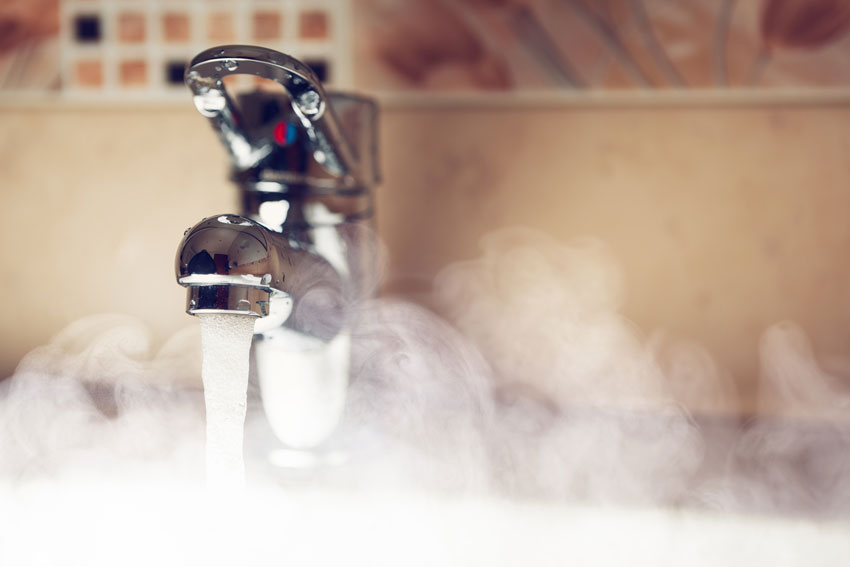
Scalding from hot water is a legitimate safety concern that needs to be addressed as part of a total plumbing solution that may include mixing valves and a digital control system.
When looking at mixing valve systems, there are two fundamental types. A point-of-source (POS) system locates valves at or near the water heating source and typically has a higher capacity for controlled temperature water. A point-of-use (POU) system uses multiple, smaller mixing valves at or near plumbing fixtures such as showers, lavatories, whirlpools, and emergency fixtures. Both types are common and have a range of standards issued by the American Society of Sanitary Engineers (ASSE) relevant to particular usage.
Beyond purely mechanical mixing valves, computerized digital mixing systems are also available that are considered a smarter and safer way to deliver mixed water throughout a health-care facility. In this type of system, intelligent control modules and electronically actuated valves are used to allow faster and more accurate response to constant changes in the mixed-water delivery demands, often anticipating system changes before they occur. Further, digital water mixing and recirculation solutions can be integrated into a building automation system to allow facility managers complete control of and visibility into their domestic hot water delivery.
As a point-of-source system, certain digital mixing and recirculation stations can provide precise control of hot water delivery within 2 degrees of the set point, surpassing industry standards for mechanical systems. When coupled with point-of-use solutions they can help mitigate any potential issue from dead legs in the system. Either way, digital mixing eliminates temperature creep within the system, thus eliminating the need for balancing valves. All of this means that it can more precisely be controlled to mitigate legionella growth in the heated water. In particular, a sanitization or disinfectant mode can be triggered to briefly raise the temperature above 158 degrees Fahrenheit to induce a “rapid kill” and purge all legionella bacteria. At the same time, the digital mixing system can control temperatures leading to faucets, showers, etc. to reduce the risk of scalding in the mixed water. If combined with separate point-of-use protection, then it allows for continuous elevated circulation temperatures to prevent legionella per ASHRAE & CDC guidelines. Concurrently, the digital system can control the circulation pump to prevent stagnant conditions or maximize flow rates. Finally, since most large facilities use some type of building automation system, a digital mixing system can be linked to the larger system to communicate and control temperature, pressure, flow, and energy consumption as part of an overall operations and maintenance plan. It also makes documentation and verification more straightforward in a water management program as called for in ASHRAE 188. From a specification standpoint, most of these systems are easy to install since they typically come pre-piped, pre-wired, and tested.
Solution 2: Chlorination and Hyper-Chlorination
The solution of adding chlorine to water is common to control not just legionella but also other bacteria. It is well suited for portions of water systems where hot water is not normally used, such as pools, decorative fountains, drinking fountains, etc. But since it is typically a point-of-source solution, it will treat and kill bacterial in all water regardless of temperature. Chlorination of drinking water is routine for municipal water supplies intent on addressing a wide range of bacteria, but at the facility level, there may be a need to alter the chlorine level to assure healthy water quality. This requires a process of on-site chlorination and the associated equipment, chemicals, and personnel to go along with it.
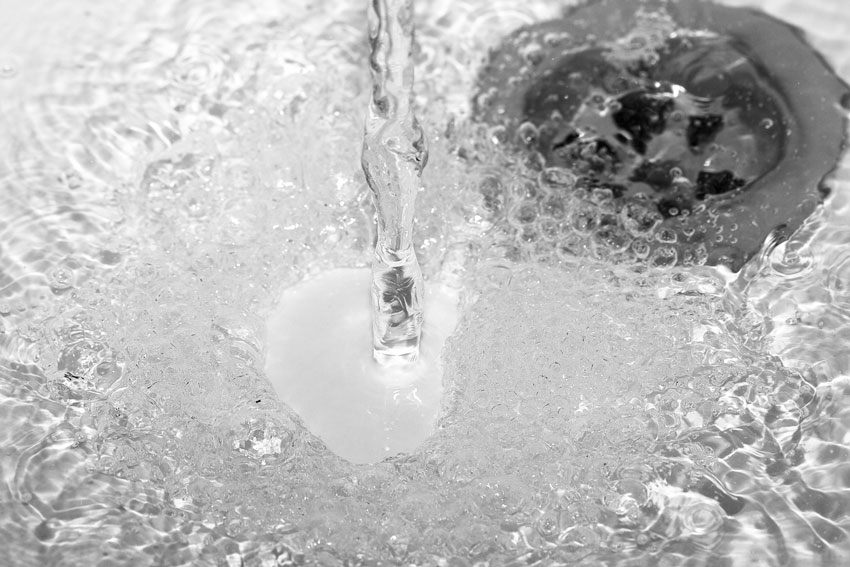
Chlorination of water is common but carries some legitimate concerns regarding health effects and corrosion to the plumbing system.
If chlorine is being added to the water, then it is very important to control and monitor the amount being used, particularly if the water is already being received with chlorine in it. Too much can be harmful to people, while too little may not disinfect the water, causing potential bacteria outbreaks. To assist in the control and monitoring, there are systems available that inject chlorine at controlled rates for regular daily use. These systems require human oversight but can otherwise be fairly automated based on water flow. In the case of an outbreak or if any other concern does arise, then “hyper-chlorination” has been employed as a short-term, high-level corrective measure. This raises the amount of chlorine in the water to between 10 and 15 milligrams per liter, which is much higher than the typical recommended levels of 0.5 to 2 milligrams per liter for daily use. At these higher concentrations, bathing in the water or drinking it is not recommended, as it may cause skin irritation or rashes. Note that some water supplies use a variation on chlorine known as mono-chloramine that can cause some poor after effects on the taste and smell of the water after hyper-chlorination. Hence, lower levels of added chlorine are called for in this case. Either way, after this hyper-chlorination shock to the system the water needs to be flushed out and replaced with fresh water.
There are some effects on the plumbing system from hyper-chlorination too. Any level over 5 milligrams per liter turns the water acidic, which makes it more corrosive to pipes, joints, fittings, and fixtures. If chemical flushing is used with hyper-chlorination, the effects could be more pronounced since chemical flushing can expose metal surfaces, making them more susceptible to chlorine damage. In addition, chlorine is an excellent electrical conductor, which is significant in plumbing systems that have mixed metals in them (common in older buildings). Chlorine passing over these various metals can create an electrical charge that produces galvanic corrosion of the piping and releases metals into the water supply. The results of these chemical interactions is that piping can begin to wear and leak at joints and connections. That means they can cause significant damage not only to the water system but also to the building. The only solution is to replace water piping that is typically embedded in walls, floors, ceilings, etc., which is clearly a large and often unanticipated expense.
The pros of chlorination include the relative ease of implementing it and a general applicability to both hot and cold water systems. The cons, however, can be numerous. High concentrations can cause unpleasing odors and taste as well as human health reactions (rash, skin irritation, potential carcinogen). Further, high concentrations have not proven to be consistently effective at killing legionella. Separate from human concerns, it can also be harmful to plumbing systems in that corrosion and pin-hole leaks have been known to develop over time. And, if the chlorine is being added on a regular basis, then such a system will require some amount of floor space to store bulk chlorine. All of this reveals hyper-chlorination to be one of the most unreliable yet one of the most expensive solutions for water treatment.
Solution 3: Copper-Silver Ionization
The use of a carefully engineered copper-silver ionization system is particularly well suited for buildings where the intent is to avoid or reduce the amount of chlorine being used in potable water. Like chlorine treatments, it can be used in either hot or cold portions of the water system, but unlike chlorine, it has almost none of the negative side effects.
The process of copper ionization was developed by the National Aeronautics and Space Administration (NASA) many years ago as a way to purify drinking water for astronauts in the Apollo Space Program. It is available for earthly use too based on employing positively charged ions from copper and silver plates. These positive ions form an electrostatic bond with negative sites on the cell walls of bacteria. The interaction breaks down the biofilm of the bacteria cell and kills it in the process. Depending on the conditions of the water and the bacteria, the amount of time it takes for the biofilm to be penetrated can vary, but this system has become to be regarded as one of the most effective treatment systems besides heat treatment. Incorporating a system that creates an EPA-approved level of 1.3 parts per million (ppm) of copper ions and 0.1 ppm of silver ions has the benefit of providing a consistent, continuous treatment that can be monitored and maintained readily. Typically, the ionization process requires a low-voltage current to free the copper and silver ions into the flow of water, but it is not a particularly significant amount of energy used. The ions become sacrificial in that they are neutralized after the purification process. Therefore, the metal plates that produce the ions need occasional replacement.
The pros of a copper-silver ionization solution include a safer treatment of water than chemical additions such as chlorine. It has also been proven to effectively control legionella and other pathogens in cold and hot water systems. It is a federal EPA-approved system that requires very little square footage to install and operate. The cons include potential higher costs to purchase and maintain the system and the possibility that some local jurisdictions may not recognize it as an approved system.
Solution 4: Ultraviolet Light Treatment
In water systems where eliminating the use of chemicals is preferred, another option is to disinfect the water supply with ultraviolet (UV) light. In this type of system, an electric lamp is used that is specifically designed to generate UV radiation, specifically UV-C radiation that has germicidal properties for disinfection. The lamp is designed to emit nearly monochromatic UV-C radiation in the optimum range for absorption by nucleic acids in the cells of microorganisms. The low-pressure lamp (commonly mercury vapor in the shape of a small fluorescent tube) is mounted in a waterproof housing and inserted directly into the stream of supply water, making it an “in-line” system. As the water passes by the lamp, the UV light disrupts the genetic DNA material of any microorganisms, including bacteria, in the water. Sometimes referred to as UV sterilization, this is a simple and rapid physical process that causes molecular rearrangement of the genetic material within microorganisms. This quickly inactivates the microorganisms by destroying their ability to multiply, grow, and ultimately infect.
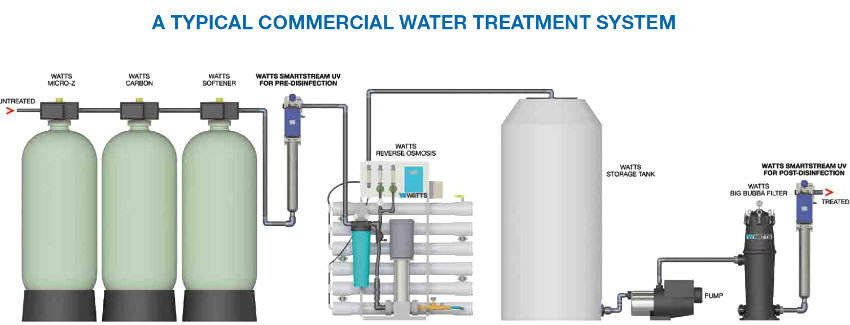
UV light can be used to control bacteria and viruses as part of an overall commercial water treatment system or in residential settings too. Here, the UV component provides pre-disinfection after a water softener and post-disinfection as the final step before water distribution.
A centralized UV disinfection system can be highly effective at providing protection against microbiological contamination in water. It can be added as an integral component of a full commercial water treatment system. In this case, UV disinfection must be used as a last step in the water treatment system, just before dispensing. UV can also be used as a pre-disinfection for reverse osmosis systems to protect the membranes from microbial contamination. The effectiveness of the disinfection depends on the UV dose level delivered, keeping in mind that different organisms require different UV dose levels to be inactivated. These systems are attractive not only because they can be very effective at killing legionella bacteria but also because they are fairly simple to use and operate. The dose produced can easily be set to suit the target organism(s) by adjusting the UV system’s flow rate. Connected to a power source, they produce the UV light that is projected onto the incoming water without the need for any chemicals to be handled or added to the water. For large systems, they are commonly completely enclosed for safety to prevent any accidental UV exposure to people. They also typically have sensors indicating their use and performance levels and can be specified to operate efficiently by only turning on when there is actual water flow in the supply line. They do require monitoring to be sure they are performing properly in a continuous state but only need minimal maintenance.
The pros of an ultraviolet light treatment solution are centered on the fact that no chemicals are involved. That means there are no chemicals to store or add, nothing to affect taste, and nothing that reacts with any other impurities in the water. The lack of chemicals also removes the potential for any harm being done to piping and equipment caused by chemical treatments. The cons can include the amount of energy needed to generate the light on a continuous basis, although some units are available that shut off if water is not flowing. The light apparatus needs to be kept clean so the light remains effective, and the water needs to be clear, not turbid. It should be remembered that this is a single-pass treatment at the lamp; there is no residual treatment further on in the system. If warranted, other treatment such as heat could be incorporated elsewhere in the system.
Other Solutions
In addition to the four common systems discussed thus far, there are some other strategies that can be incorporated. These may be appropriate for portions of systems or for some specific reason but are worth mentioning here for consideration when warranted.
Other Chemicals
There are some alternatives to chlorine but with a variety of results and effectiveness in regards to legionella. We have already discussed that mono-chloramines (NH2Cl) are used by some municipal water sources because they are seen as a safer alternative to straight chlorine. It also has a much lower tendency to convert organic materials into chlorocarbons, such as chloroform and carbon tetrachloride, which can cause their own health risks and detrimental effects on the plumbing. Nonetheless, they still carry some notable concerns, not the least of which is that NH2Cl is listed as a carcinogen and mutagen. Hence, it is typically used in very low concentrations, offering a very stable additive that does not dissipate as quickly as straight chlorine does. So while this chemical may already be present in municipal water and can penetrate a wide range of biofilms in microorganisms, it does bring with it the risk of some harm to people or plumbing if mixed improperly or if it infiltrates at too high a level.
Chlorine dioxide (ClO2) is a neutral chlorine with a chemical structure and behavior that is very different from basic chlorine. It has a very high water solubility and remains dissolved as a gas in the water, even at low temperatures. It is sometimes used in smaller secondary distribution lines that have no galvanized piping that could be affected by it. It has the pros of being an EPA-approved biocide that performs better than chlorine when the water pH level is above 7. It also works well in all temperatures of water and bacteria does not seem to grow resistant to it. On the cons side, a licensed individual with a specific license is needed to operate this system since the material is considered toxic and can become volatile if not stored correctly. Its effect on legionella is slow, requiring a prolonged exposure to show any reduction. Reactions with organic material in the water or corrosion scale on the piping can cause the chlorine dioxide to convert to its by-products (chlorite and chlorate), which may pose health risks.
In general, while both of these chlorine alternatives provide some advantage over straight chlorine, they also bring some other issues that need to be carefully assessed before they are used as part of a full water management program.
Ozone Treatment
Another alternative to chlorine is the use of ozone (O3) which is a naturally occurring clear-bluish gas with a distinctively fresh smell. Ozone has been shown to be more effective against bacteria and viruses than chlorination while eliminating any taste or odor issues. It is introduced into the water stream either by bubbling it up from the bottom of water tank or by using a Venturi tube to pull the ozone into the water. As an enhanced version of oxygen (O2) it has oxidation properties that help reduce some concentrations of minerals and organic particles too. This can cause insoluble particles to form in the water, which means that some form of post-filtration is needed to keep the water clean. Nonetheless, even with the added filtration, it is generally an effective and economical means to treat water.
Water Filtration
Water filtration is a common approach to remove contaminants from water. It is appropriate to use regardless of the water source to help prevent contamination of the building water system from incoming water. Filtration is a good supplement to help assure overall water quality, but it will not, by itself, address the control of legionella. It can, however, be very effective at helping other systems work properly. That is because one of the biggest benefits of water filtration is the removal of sediments and some minerals from the water. When those are not filtered, they can build up in the piping and equipment in the form of scale, which can restrict water flow or interfere with the proper operation of other equipment. Further, filtration can help with reducing overall bacteria growth, in part because of the reduction of scale where it can harbor, and in part from filtering some of it directly out of the water.
As an example of the interaction between filtration and other water treatment system components, a study performed in the mid-1990s at the VA Medical Center in Pittsburgh tested the effects of UV radiation at the point of use on showers in the facility. The UV treatment appeared to work well at first but then became less effective. It discovered that the incoming hard water was depositing scale on the UV lamp and reducing the amount of UV light that was passing into the water. Once the lamp and housing were cleaned and filters installed to address the hard water, the problem went away, and the UV system became a very effective means of controlling legionella at the facility.
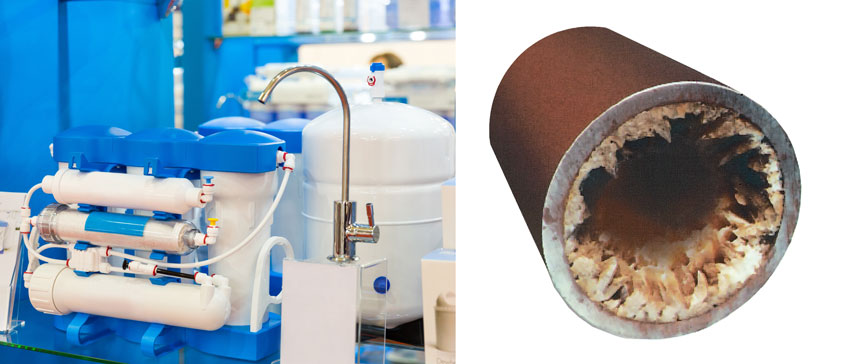
Water filtration is an effective supplement to some of the other solutions discussed and can keep them functioning properly. In particular, it can prevent the buildup of scale as seen in the pipe shown above.
Circulation Controls
Among the common approaches to protecting water quality in a water supply system, the use of backflow preventers is typical. Backflow systems are essentially a series of plumbing control valves that prevent the reverse flow of polluted water from entering into the potable water supply due to back-siphonage and or backpressure. Some municipal water systems will require backflow systems, particularly on large water users such as health-care facilities, since it is in the interest of public safety and health to do so, especially if there is any chance of infectious bacteria entering the water system. Therefore, including backflow preventers can be part of a preventive control measure in a water management program. While important, it does not provide any treatment of the water; rather, it simply helps assure that the water is flowing in the proper direction to help maintain good water quality.
Design Considerations
In addition to solutions the design of the premise plumbing should be extensively reviewed. Plumbing systems can be complicated, especially within a hospital. A majority of hospitals are older structures that have been added on to and renovated multiple times. This increases the complexity of water systems. Some design methods include continuous recirculation of domestic hot water; high water temperature is maintained throughout the main waterway, with tempering valves at all points of use.
Yet, there are still challenges. Consider first that many large facility domestic water systems can contain many thousands of gallons of water (U.S. hospitals are water hogs, using an average of 570 gallons of water per staffed bed). That’s a lot of water. Consider, too, that as water moves away from heat sources where temperatures may be sufficient to prevent germ growth, those large pipelines may cool domestic hot water to ideal temperature ranges for waterborne pathogens.
Consider, too, ubiquitous biofilm within those piped waterways. As microbes grow, they attach themselves to wetted surfaces in water distribution systems. They protect themselves from disinfecting agents, and heat, by forming biofilm. A biofilm contains a group of bacteria enveloped within a polymeric slime that ensures adhesion to the pipe surface – and a nice, soft place for resilient microbes to grow and prosper. The biofilm also contains the food for bacterial growth, adding substantially to the importance of this challenge.
Even water in new facilities has this risk. Consider how long water has been in the building prior to opening the building for operation. Typically, many months; there it sits, becoming stagnant – a perfect home for biofilm buildup and bacterial growth. Sadly, many hospitals have opened only to be confronted with numerous legionella cases, the source being the water that was introduced to the piped systems long before the first patient walked in the door. Proper disinfection and flushing must happen to help combat this problem.
- Some of the major design considerations for legionella risk mitigation include:
- Continual circulation
- Elimination of dead legs
- Maintaining a high-water temperature throughout the system
- Utilizing solutions from POE to POU
Conclusion
It should be clear that there are many choices available for treating water for legionella and other concerns. However, not all of them are equally effective nor equally appropriate for different building conditions. It is appropriate, therefore, to review and assess the specific needs of a building facility and compare them with the available choices to determine what solution is best for a particular facility. Consultation with design professionals and suppliers of the systems described will likely produce the best results. Keep in mind that due to the variety of building conditions, the approach of a multi-barrier solution may be the best recommended option since it provides increased protection throughout the water system. Overall, the goal is to provide an effective, ongoing system that helps prevent outbreaks of legionella and is straightforward to monitor, maintain, and document.
A summary of the different solutions discussed is presented below:
Peter J. Arsenault, FAIA, NCARB, LEED AP, is a practicing architect, green building consultant, continuing education presenter, and prolific author engaged nationwide in advancing building performance through better design. www.linkedin.com/in/pjaarch
 |
Watts is a global leader in the design and manufacture of innovative water solutions for residential, commercial, and institutional environments. Products include an extensive line of flow control, filtration, and treatment products for water quality and residential plumbing and heating. Founded in 1874, Watts is headquartered in North Andover, Massachusetts. www.watts.com |





















